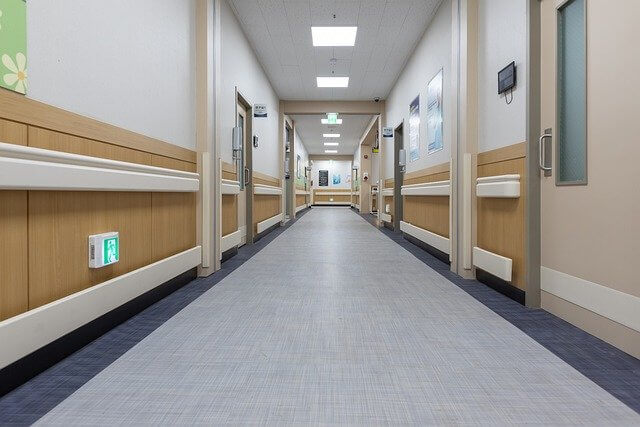Hospitals need to be sanitary, and a robust pest control plan is an essential part of accomplishing that. As much as you clean and sanitize surfaces, tiny critters can still infest the hidden areas and create a big problem if left unattended. Additionally, there are various sensitive factors present in hospitals, which can make finding the right solution complex. In this article, we will be discussing safe and non-toxic ways for health care facilities to combat infesations.
Education and Proactive Management
Preventing pests should always be a top priority in effective pest management. Today, utilizing Integrated Pest Management (IPM) to solve pest problems in health care settings is growing in popularity. IPM works by applying knowledge about pests for prevention as the first line of defense. If bugs introduce themselves, IPM responds with the most effective, least-risk option available.
In a hospital setting, your team can accomplish this by taking the time to educate your staff on the different pest threats and how to identify and report them. For example, dedicated meetings and having materials on hand or display with identification images and checklists can serve as helpful reminders.
Potential Pest Threats in Hospitals
German Cockroaches in Hospitals
One pest that carries one of the biggest health concerns is cockroaches. Cockroaches are a significant contributor to the spread of bacteria and diseases, including 33 different bacterial species, including salmonella and E. coli, six parasitic worm species, and seven other human pathogens. In hospitals, their presence can compromise the sanitation of operating and patient rooms, therefore, making them a considerable concern.
Bed Bugs in Hospitals
Bed bugs are also a massive problem within the healthcare industry. With high turnover traffic, there are many opportunities for bed bugs to introduce themselves. While bed bugs are a lower risk for health concerns, bed bug bites can leave itchy bites, and their presence can cause unpleasant experiences.
Stored Product Pests in Hospitals
Any environment with food, water, and shelter can attract stored product pests. Thus, making hospitals a potential environment to thrive and reproduce. When this happens, product pests cause a variety of damage ranging from loss of inventory, sanitation issues, spread of diseases, and properity damage.
Taking Action Against Pests
So, what happens if you do discover these pests?
After discovering pests, it is necessary to take action. Under IPM, the goal is to target the pest with limited impact on others and the environment. Ideally, without pesticides. Taking a non-toxic approach is extremely important in hospitals due to the sensitive population that occupies the building.
So, how do you go about it with minimal disruption and pesticide use? One solution is using The Cryonite Machine. The Cryonite Machine works by employing the cooling properties of CO2 and freezes pests, including cockroaches, bed bugs, and stored product pests on contact.
The Benefits of Using Cryonite in Hospitals
Cryonite’s non-toxic and non-residual formula is exceptionally advantageous for sensitive environments because carbon-neutral CO2 presents no risk of contamination since it is pesticide-free.
There are numerous advantages to using the Cryonite CO2 snow to eradicate pests, including:
- The hospital or healthcare facility can continue to operate as usual while treating individual hot spots of pests.
- Quicker room turnover times save a tremendous amount of time and money.
- The non-toxic formula is safe to use in a sensitive environment.
- No hassle of getting a record or permits.
- You can train your staff to respond to the infestation with the Cryonite Machine.
- It is a valuable tool in any IPM or Green Pest Management program.
If you are looking to have a tool on hand that will save you time and money while increasing safety for your staff and patients, contact us about Cryonite today!

